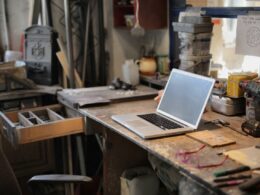We got our start as entrepreneurs by inventing, developing and licensing the Battery Buddy, a device that prevents dead batteries on cars and boats. And the invention prototypes we built were critical to our success in ultimately licensing the product to a multi-billion dollar NYSE company.
Invention prototypes are crucial because they go a long way toward proving your concept to potential investors, customers and suppliers – and to yourself. Many experts agree. “The whole reason to do a prototype is that it can help you accomplish a lot without your having to invest too much in the product idea or commit to it early on,” says Bob Cannon, chief executive officer of Cannon Advantage, a management consultant in Burton, Ohio, who specializes in bringing inventions to market.
Build an invention prototype at the right time
Make sure you’re thinking about a prototype all along and that you put one together, even if it’s a crude one, earlier than you think rather than too late. That means constructing an invention prototype long before you buy tooling to build your product or seek a contract manufacturer.
You may actually want to construct a prototype even before you get too fancy with computer drawings. “You can burn up a lot of money on engineering drawings when maybe what you really need first is a chunk of papier mache that shows what you’re trying to do,” says Andrew Nolan, a long-time industrial designer who helps entrepreneurs prove their concepts as a side business. “Then go back and do the [computer-aided] drawings.”
And in trying to assess the right time for a prototype as it relates to your patent, don’t fret. You don’t need to possess a working prototype in order to file for or be issued a patent. You just have to be able to prove that you could create a product that works as you’ve described.
The right invention prototype for the right audience
“The biggest problem I see is that folks tend to show prototypes to their mothers, cousins, aunts and uncles – and get positive feedback from them – and then go off on a tangent with their product without knowing whether they’ll have commercial success or not,” says Cannon. “You need to have someone whose opinion matters look at your prototype and say it’s promising.”
An invention prototype needs to be aimed at the right audience to do its job. That means tailoring it to fit the requirements and withstand the critiques of any combination of potential investors, partners, customers, suppliers and/or investors – not only the casual appraisals of friends and family.
The more operable and the slicker-looking your prototype, the better, but don’t get too carried away. After all, an invention prototype isn’t a production piece, and no one expects it to be. Keep this project inexpensive; there are plenty of other places for you to spend your startup capital!
Consider making more than one prototype
If it isn’t too difficult or expensive, be prepared to make multiple versions of the invention prototype along the way — your design is probably going to evolve and improve as you develop it and you’ll want to have enough money to prototype the latest and greatest generation.
Another form of this approach is to make one prototype for “show” and another for “go.” In other words, you could make one prototype that looks like a finished product and another that demonstrates the functionality.
For the Battery Buddy, we had a “works-like” and a “looks-like” prototype. For the first one, we just bought a plastic gray box at Radio Shack and bolted wires, computer chips and switch plates inside according to our scheme for the product. It was about four times larger than the Battery Buddy that actually reached retail – and it was just plain ugly – but this prototype achieved what we invented our product to do: shut off a draining car battery while retaining enough power in the battery to start the car.
On the other hand, we carefully created our “looks-like” invention prototype at the woodworking shop at the University of Michigan, fashioning a box to the exact exterior dimensions of our engineering drawings. We painted it with fine, fancy graphics. And then we were able to show partners and customers that our Battery Buddy – or more accurately, an exact look-alike of it – would fit on more than 90% of the vehicles on the market.
Our Bottom Line
Invention prototypes are crucial for selling your product idea to potential investors, customers and others. You can put one together inexpensively as long as you have a well thought out strategy and purpose for the finished prototype.






